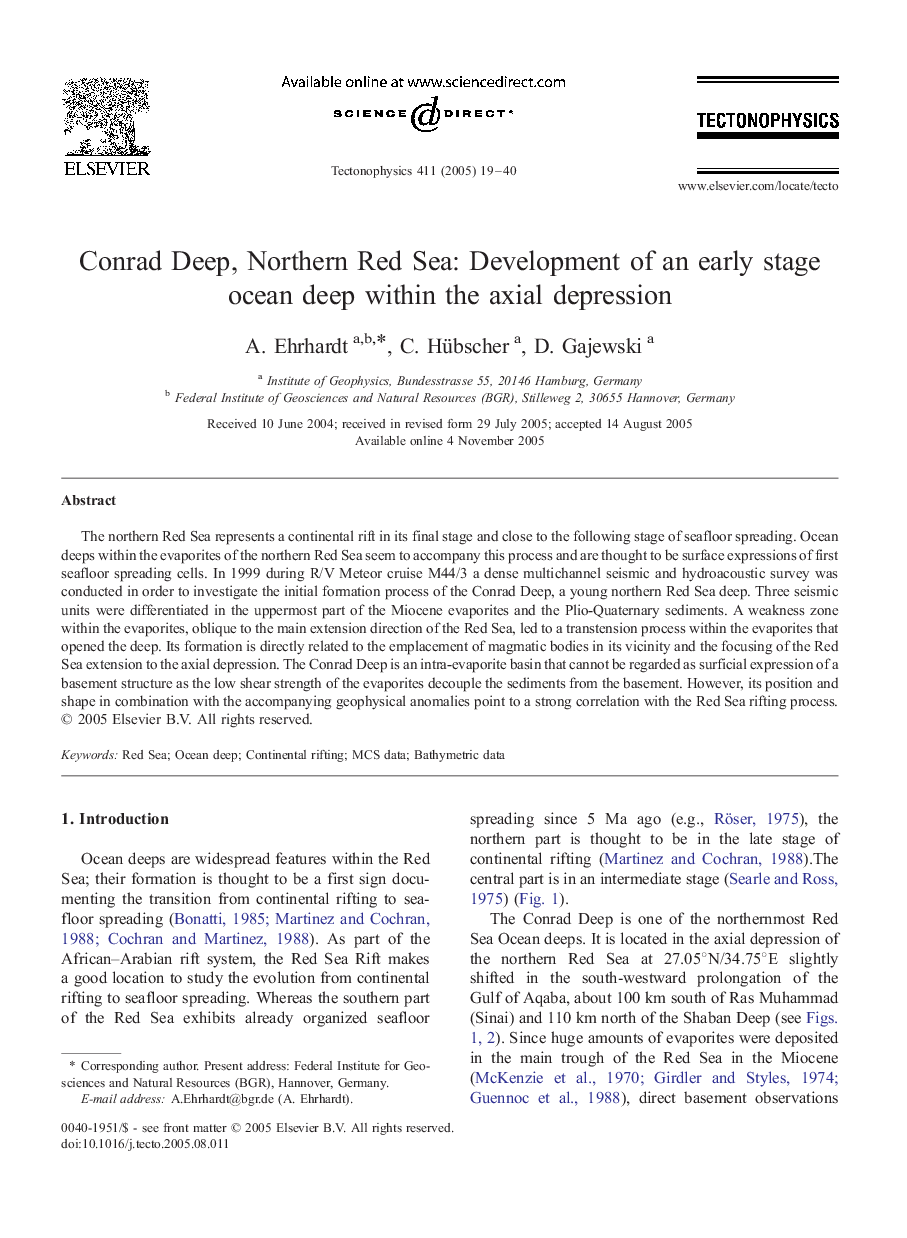| Article ID | Journal | Published Year | Pages | File Type |
|---|---|---|---|---|
| 9526898 | Tectonophysics | 2005 | 22 Pages |
Abstract
The northern Red Sea represents a continental rift in its final stage and close to the following stage of seafloor spreading. Ocean deeps within the evaporites of the northern Red Sea seem to accompany this process and are thought to be surface expressions of first seafloor spreading cells. In 1999 during R/V Meteor cruise M44/3 a dense multichannel seismic and hydroacoustic survey was conducted in order to investigate the initial formation process of the Conrad Deep, a young northern Red Sea deep. Three seismic units were differentiated in the uppermost part of the Miocene evaporites and the Plio-Quaternary sediments. A weakness zone within the evaporites, oblique to the main extension direction of the Red Sea, led to a transtension process within the evaporites that opened the deep. Its formation is directly related to the emplacement of magmatic bodies in its vicinity and the focusing of the Red Sea extension to the axial depression. The Conrad Deep is an intra-evaporite basin that cannot be regarded as surficial expression of a basement structure as the low shear strength of the evaporites decouple the sediments from the basement. However, its position and shape in combination with the accompanying geophysical anomalies point to a strong correlation with the Red Sea rifting process.
Related Topics
Physical Sciences and Engineering
Earth and Planetary Sciences
Earth-Surface Processes
Authors
A. Ehrhardt, C. Hübscher, D. Gajewski,
